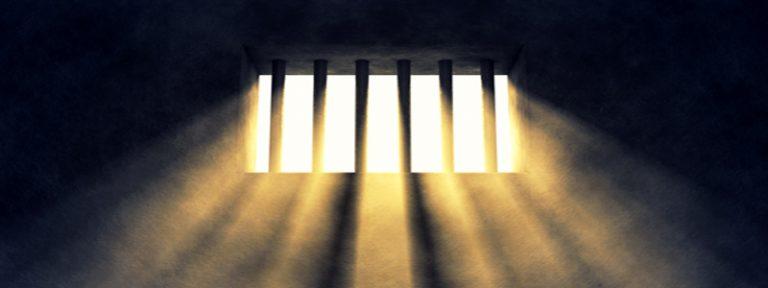From Punishment to Rehabilitation: The Need For Prison Reforms

The dismal condition of Indian prisons with a total seizure of individual freedom demands immediate reforms. A prison administration that is unable to rehabilitate an offender into a law-abiding citizen presents a risk to society, write MD TASNIMUL HASSAN AND DEEKSHA TIWARI.
—-
Prisons are considered the “tailend” of the criminal justice system. Famous American criminologist Donald R Taft once remarked that prisons are purposefully designed to create forced separation from society. According to Taft, prison is defined by severe discipline, the provision of minimum requirements, strict security procedures and a monotonous daily routine.
Prison life necessitates certain constraints on the freedom of inmates. A prison houses undertrials and convicts with a total seizure of individual freedom. Prisons have existed since ancient times, where antisocial elements were kept in what was referred to as the ‘House of Captives’ for deterrence and retribution.
In the modern context, a prison connotes a ‘correctional’ facility thereby emphasising the reform of inmates. However, a majority of the world’s prison systems are said to be functioning below the level prescribed by the United Nations Standard Minimum Rules for the Treatment of Prisoners.
It is important to recognise that crime is not necessarily always the result of a bad intention or criminal intent. Denying individuals their freedom of choice, and impeding economic, social, political, and cultural rights could lead to graver evils. Therefore, the prison system calls for further multilevel reforms.
Also read: Supreme Court panel recommends several prison reforms
History of prison reforms in India
In 1835, Thomas Babington Macaulay referred to the inhumane conditions in prisons and suggested forming a committee for better discipline. It resulted in the constitution of the Prison Discipline Committee, 1836, which submitted its report to governor-general Lord Auckland in 1838. The panel recommended increased rigorousness of treatment and rejected all humanitarian needs and reforms for prisoners.
The Second Commission of Inquiry, appointed by governor-general Lord Dalhousie in 1864, laid down a system of regimentation. In 1877, a conference proposed a prison law, and subsequently, a draft prison Bill was prepared but never enacted.
The Fourth Jail Commission, appointed by governor-general Lord Dufferin in 1888, stated that uniformity in prison administration could not be achieved without a unified prison statute. Subsequently, a consolidated prison Bill that prescribed rigorous punishment was drafted and became the Prisons Act, 1894, which currently governs prisons in India.
Moreover, the Government of India Act, 1935, resulted in prisons coming under the control of provincial governments, reducing the possibility of the implementation of a single prison statute. The Constitution retained this position as it kept prisons as a State subject (Entry 4, List II of the Seventh Schedule).
The All India Jails Committee, 1919-1920, was a major landmark in modern prison reforms in India as reformation and rehabilitation were identified as the objectives of the prison administration.
Also read: Prison reforms in India
The Supreme Court (SC) in Shri Rama Murthy vs State of Karnataka, 1996, sought to bring about uniformity in prison laws and prepare a draft model prison manual, which resulted in the formation of a committee whose proposed jail manual was circulated among states.
Judicial intervention has failed
Last year, an apex court panel recommended several prison reforms to foster access to justice which have been only partially implemented. Further, it was reported that three years after a committee submitted its report following an order of the Bombay High Court on prison reforms, its recommendations are yet to be accepted by the government.
Recently, the Orissa High Court directed all district magistrates to make surprise visits to jails and submit reports about the condition of the prisons in their respective jurisdictions.
Even though the top court has recognised prisoner rights vide a series of judgements, such rights elude inmates. While establishing new prisons can temporarily alleviate overcrowding, past evidence reflects that this is not a practical long-term solution.
Also read: Key Prison Reforms Failing Due to Political Apathy, Says Rights Group
Furthermore, constructing and maintaining new jails is costly, which puts a strain on limited resources. Instead, several international instruments call for a rethinking of sentencing policies, including greater use of alternatives to jail.
Pandemic and need for prison reforms
The SC’s May 7 order on decongestion of prisons, as Covid-19 ravaged the country, was only “temporary” without any solution to the bigger problem of denial of prisoner rights. A report by Amnesty International concluded that the rights of prisoners were violated around the world during the pandemic.
The atmosphere in a prison has a significant impact on how inmates act. A violent atmosphere heightens emotions and causes stress, which can lead to conflicts that are either impulsive or premeditated. Violence in prisons can be minimised only when the environment is humane.
A jail’s atmosphere can also have major health consequences both for new prisoners pre-diagnosed with illnesses and old inmates who get afflicted with diseases. Congestion and lack of fresh air and a balanced diet make matters worse.
Also read: The pandemic has put the spotlight on inhumane conditions in Indian prisons
The 2020 India Justice Report revealed that the average number of cases pending in High Courts increased from 4.012 million in 2016-17 to 4.425 million in 2018-19. In contrast, the figures in lower courts were 28.3 million and 29.7 million for the respective years.
In the wake of the Coronavirus with no social distancing in overcrowded jails, the SC directed the states and Union territories to established high-powered committees to decongest prisons.
Isolation and confinement affect inmates, especially first-time offenders, psychologically. Seclusion, deprivation, family estrangement and a looming sense of hopelessness impact an inmate’s mental health. The drastic reduction in judicial hearings, restrictions on meeting family members, limited movement and discontinuation of social activities inside jails during the pandemic have worsened the situation.
Remand, or pre-trial detention, is considered the most vulnerable time for abuse of the criminal justice system. Although such detainees, living under constant uncertainty and anxiety, should be presumed innocent until proven guilty, they face worse conditions than the convicted.
In India, the Prison Statistics India-2019 report, released by the National Crime Records Bureau, revealed that 69.05% of those behind bars were undertrials with 30.11% being convicts and 0.67% being detenues.
The Mental Healthcare Act of 2017 requires the state to provide enough, effective, and high-quality mental health aid to inmates. According to Section 103 (7) of the Act, mental health establishments within prisons must be registered with either the Central or state mental health boards and must follow certain criteria and procedures. However, a recent report reveals that the Tihar Jail lacks any kind of mental health facilities for inmates.
Also read: Data | 70% prisoners in India are undertrials
Rehabilitation or breeding ground for violence
The rehabilitation theory involves a variety of programmes to help people become more self-assured, cooperative and self-sufficient. This system, of course, works in tandem with a comprehensive set of reforms in other areas and sectors to eliminate inequity and discrimination.
Any substantial prison reforms must be carried out while keeping in mind the institution’s purpose in the first place, i.e. reform and rehabilitation of the inmates. The focus of correctional measures needs to shift from punishment to reintegration. When combined with sufficient aid and support, it will allow formerly incarcerated individuals to lead a normal life without having to revert to crime.
Also read: Putting ex-prisoners on road to reintegration
Prisons can either turn out to be breeding grounds for violent, destructive ideologies or reforming institutions. A prison administration that is unable to rehabilitate an offender into a law-abiding citizen presents a risk to society and is an expensive oversight. Even the SC noted in Mohammad Giasuddin vs State Of Andhra Pradesh, 1977, that “a therapeutic rather than an in terrorem outlook should prevail in our criminal courts since brutal incarceration of the person merely produces laceration of his mind”.
(Md Tasnimul Hassan and Deeksha Tiwari are part of Fellowship For Freedom, Students For Liberty, South Asia. The views expressed are personal.)
Get the latest reports & analysis with people's perspective on Protests, movements & deep analytical videos, discussions of the current affairs in your Telegram app. Subscribe to NewsClick's Telegram channel & get Real-Time updates on stories, as they get published on our website.
























